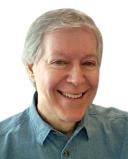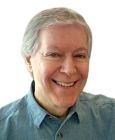Child Development
Life's Turning Points: The Mystery of the Self Within Your Self
Turning points contain a message from yourself to yourself.
Posted March 31, 2012
While driving in my car the other day, I heard an old song that instantly transported me to a vivid scene in my life. I’m a not-yet teenager, sitting in the kitchen and having an after-school snack. I reach for the radio to tune in a Yankee’s baseball game, as I usually did (back then, games still played in the daytime). But for the first time, I hesitated. Instead, I turned the dial to a rock and roll station.
I recall feeling at that moment that something had just shifted in my sense of who I was; who I was becoming. I believe it was more than just the rumblings of impending adolescence, or thinking about that new girl in class. It was a new awareness about who this “self” was, inside me; that I was no longer just the person I thought I was a moment before. It was a turning point in my consciousness about myself.
We experience many turning points in our lives, whenever we shift direction this way or that. Perhaps a decision about a relationship, or what interests to pursue. Maybe about an educational or career choice. Some turning points are conscious, others less so; some may be imposed by family or other persuasive people. But all involve turning away from one path, and towards another. And they shape the self that you experience and define as “you,” along the way.
In my work, I often ask people to describe what they think were the positive and negative consequences from their key turning points, because there’s always a message contained in what you turned away from, or towards. It’s a message from your inner or true self, to the self that you identify with. The latter is increasingly shaped by your decisions and whatever you adapt to in your external life. But often, people don’t “hear” what that message is, and what it means.
Viewed this way, your inner self is the realm of your innate capacities, sensitivities, and awareness: all that is prior to the conditioning that you experience along the way, from day one. Your inner self keeps pushing to be heard, enacted, and expressed in the face of whatever path you follow. It’s giving you a coded message, from yourself, to yourself. If you unlock its mystery, it reveals a challenge you’re constantly giving to yourself, within both your “failures” and “successes:” To identify that which you need to face, deal with, or embrace, in order for your true self manifest in your life.
Reflecting on this “self within the self” brought to mind a recent, poignant New York Times essay by the novelist Walter Mosley, In an L.A. Childhood, the First Mysteries. There, he described a bittersweet, childhood memory of his 3-year-old self in the backyard of his parents. Observing and experiencing what was around him with awakening eyes, he said to himself, “These must be my parents,” and he called out to them. But then, he added with a dark twist, “My mother nodded. My father said my name…Neither touched me, but I had learned by then not to expect that.”
Mosley described elsewhere "an emptiness in my childhood that I filled up with fantasies," and concluded his Times essay about his “first mysteries” by noting that “…the primitive heart that remembers is, in a way, eternal.” Interestingly, Mosley grew into the acclaimed mystery novelist he is, today.
The self within your self
I don’t know what the many influences on Mosley’s life were, but your sense of who you are is continuously shaped by turning points and other experiences in your life, whether you label them good or bad; choose them consciously; occur by happenstance; or if you’re pushed towards them by unconscious needs. And yet at the same time, there’s always an inner awareness, a consciousness that most people are able to acknowledge, no matter how dim it is: a kind of underlying, enduring “self” that doesn’t really have a form, just an awareness of it’s own.
This what you recognize or sense that is the true “you.” Sometimes it feels in synch with your “outer” self. Sometimes it clashes. But it’s always there, pushing to manifest itself. In that sense, it feels ever-present, as you change and evolve through life. That underlying awareness often fuels the speculation many people engage in at times, about the alternative lives we might have lived had we had gone this direction rather than that. You may wonder, how different would your self have become?
My own musings include reflecting on how I might have evolved differently had I taken that college semester in India I decided against; or joined the Peace Corps after college instead of immediately entering grad school. Or, if I had apprenticed myself to learn the art and craft of writing at the start of my adult life. How would any of those alternate paths have shaped where I came to live; the women I married; the work I’ve engaged in. What might have become different about the “me” that exists today?
More importantly, my internal self was constantly trying to show itself through the choices I made, and their consequences. Over many years, I gradually realized what that message was, that I’d been giving myself each time: the particular challenge I need to take on in order to grow. I spoke about this kind of experience recently with one of my leadership development clients. He was lamenting that he’d “wasted” some of his 20s doing work that not only had become a dead end for him, but that he had known, all along, he never really want to pursue. I suggested that he reframe that experience and look at it from the perspective that the “failure” revealed his challenge. For him it was to act with courage upon what he knew, inside, that he really wanted to pursue, but was frightened to do so. That was the message he gave himself through the “failure” that remained important today.
Another person, a therapy patient, told me that as he was walking down the aisle, literally, to his marriage ceremony, he was conscious of knowing, within, “I don’t belong here. This isn’t what I should be doing.” Not surprisingly, his marriage was filled with conflict for several years before he was able to face the mismatch of personalities and values, learn why he had entered into it, and then separate respectfully, from his wife.
George Eliot wrote in Middlemarch that “It’s never too late to be what you might have been.” But your core “essence” may become so covered over by events and experiences that you ignore it or don’t “hear” it. Unlike insightful novelists, Western psychology doesn’t provide sufficient understanding of the self within the self. We need to broaden our perspectives to include points of view from Eastern spiritual teachings. Increasingly, the latter are joining with the thinking of Western scientists, and a bridge is emerging.
For example, some psychological research demonstrates that people can and do change and grow their selves with conscious intent. This suggests that you can draw on and activate the emergence of your true self. Also, research shows certain voluntary experiences can change who you are. Learning a new language is an example. Another is a recent NPR report about an experiment by Gary Marcus, an NYU psychologist and director of its Center for Language, and Music. He decided to teach himself the guitar at the age of 38, and observe what occurred. He’s also written about this in his book, Guitar Hero.
Overall, there’s growing evidence that acts of volition can activate qualities or capacities of your inner self that are otherwise dormant. Eastern perspectives describe the self, in this broader perspective, in terms of a simultaneous self and “non-self.” A duality that’s not a duality. That is, think of your external self that you identify with as a false self, in contrast to the internal, true, non-self. In Eastern traditions, the latter may be described as the soul, pure spirit, or the underlying energy that congeals into a physical form.
Typically, the false ego is what we mistakenly think of as our real being. This paradox is illustrated by a well-known Hindu story about the dialogue between the sage Nagasena and King Melinda. Through a series of Socratic-like questions, Nagasena deconstructs the “self” of a chariot, asking if it is defined by its axle, it’s wheels, it’s framework, and so on. Eventually, Melinda realizes that “…it is in dependence on the pole, the axle, the wheels, the framework, the flag-staff…that there takes place this denomination ‘chariot,’ this designation, this conceptual term, a current appellation, and a mere name.”
Other bridges between Eastern and Western perspectives about the true, “non-self” include psychiatrist Mark Epstein’s books on Buddhism and psychotherapy, and Deepak Chopra’s many writings; for example, on growing perspectives about the nature of consciousness, the brain, and it’s link to the structure of the universe. And the Mind & Life Institute has been conducting seminars between the Dalai Lama and leading scientists, to explore ways to deepen understanding about the nature of physical reality and consciousness from both Western and Eastern perspectives.
The work of the late Sufi teacher Pir Vilayat Inayat Khan provides a significant bridge between East and West. His teachings and meditation lessons connected modern science with ancient spiritual teachings from Yoga, Buddhism, Jewish and Christian traditions, as well as Sufi. He describes the inner “non-self” or soul as “…conscious only of its limitation, of its possessions with which it identifies itself…” and therefore “forgets its own being and becomes captive of its limitation.” He adds, “Consider the screen of your mind as a doorway giving you access beyond its limitation. Envision that the shadows on the screen are not simply what you perceive, but clues which if followed would open vaster and vaster horizons.”
He emphasizes that what you think you are is only a partial, incomplete portrayal of who you really are and can become. He offers the perspective that "The Universe can only know itself through those fragments of itself that are us, just as the tree knows itself through the branches of the tree.” He adds that “…in order to know itself through beings, it has to configure itself in a manner that is tangible to those beings -- and that is through form, what the Sufis call creative imagination."
Even if you think of the above perspectives as just useful metaphor, it’s helpful to envision yourself as constantly co-creating your future with the conscious universe, the underlying energy of all things. And that the latter is always working though you, to help you awaken and manifest your true self via the messages it gives you. The turning points and decisions throughout your life provide a continuous message from your true self about what you need to face, resolve, let go of, or act upon.
Can you hear it?
Center for Progressive Development
Blog: Progressive Impact
© 2012 Douglas LaBier




